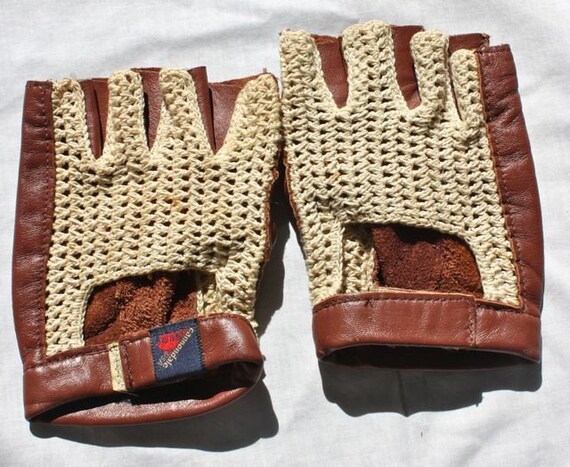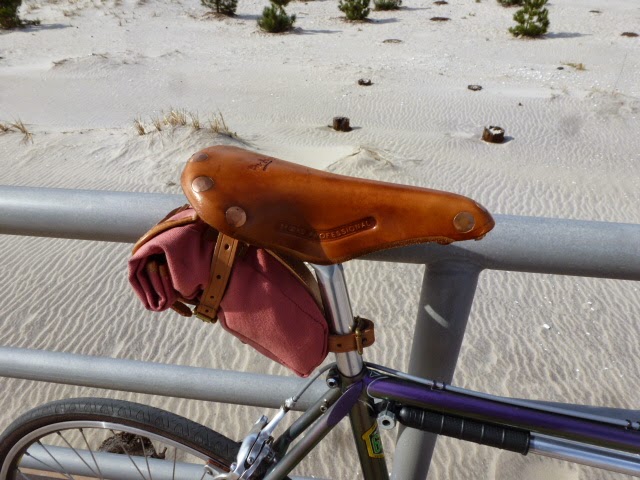Another ride to Point Lookout today. Trust me, I'm going to do other long(er) rides soon. But I think I had good reasons for doing the ride again today after doing it on back-to-back days last weekend.
Actually, I hadn't planned to such a long ride (about 105 km, or 65 miles). I'd been feeling a bit under the weather for the last couple of days. Today I felt a bit better and the weather was nearly perfect: sunny, with some wind, 15-17C (60 to 65F). So I started off down the street from my apartment and down a few more that could have taken me to the Rockaways, Coney Island or other points south in Brooklyn or Queens.
When I crossed Atlantic Avenue on Woodhaven Boulevard, I knew I was headed to the Rockaways. If I pedaled just to Rockaway Beach and back, that would be about 50 km. I got there, feeling good, and took a left out toward Arverne and Far Rockaway.
Now, there isn't much noteworthy in Far Rockaway except for the beach, where the dunes are lovely but the water is still too cold (about 7 or 8 degrees C) to swim. Going to the Rockaways on my bike usually means one thing: crossing the bridge into Nassau County--Atlantic Beach, to be exact--and riding along the South Shore.
Mind you, on my way down to the Rockaways I rode into a wind that buffeted me on my right side as I rode along the coastline. Still, I was feeling much better than I expected, so I kept on riding.
The Point was quiet today, but the tide had come in. So, where I saw sandbars last week, I saw this:
The water must have been rough because I didn't see anyone sailing or windsurfing. But when you're on a bike, it doesn't matter. Especially mine: they always ride great.
On the way back, I felt something go "thump" and heard a clank. I was imagining the worst: a flat tire and some part fallen off my bike. But I couldn't imagine what: Everything is tight and well-maintained. I looked back and found this:
Most of you have a tool just like it. I have two or three. It doesn't hurt to have another, as it includes the allen key sizes (4, 5 and 6mm) most commonly used on bicycles. So I'm going to hold onto it--or give it to someone. After all, the ride was a fine reward. I feel good now.
Actually, I hadn't planned to such a long ride (about 105 km, or 65 miles). I'd been feeling a bit under the weather for the last couple of days. Today I felt a bit better and the weather was nearly perfect: sunny, with some wind, 15-17C (60 to 65F). So I started off down the street from my apartment and down a few more that could have taken me to the Rockaways, Coney Island or other points south in Brooklyn or Queens.
When I crossed Atlantic Avenue on Woodhaven Boulevard, I knew I was headed to the Rockaways. If I pedaled just to Rockaway Beach and back, that would be about 50 km. I got there, feeling good, and took a left out toward Arverne and Far Rockaway.
Now, there isn't much noteworthy in Far Rockaway except for the beach, where the dunes are lovely but the water is still too cold (about 7 or 8 degrees C) to swim. Going to the Rockaways on my bike usually means one thing: crossing the bridge into Nassau County--Atlantic Beach, to be exact--and riding along the South Shore.
Mind you, on my way down to the Rockaways I rode into a wind that buffeted me on my right side as I rode along the coastline. Still, I was feeling much better than I expected, so I kept on riding.
The Point was quiet today, but the tide had come in. So, where I saw sandbars last week, I saw this:
The water must have been rough because I didn't see anyone sailing or windsurfing. But when you're on a bike, it doesn't matter. Especially mine: they always ride great.
On the way back, I felt something go "thump" and heard a clank. I was imagining the worst: a flat tire and some part fallen off my bike. But I couldn't imagine what: Everything is tight and well-maintained. I looked back and found this:
Most of you have a tool just like it. I have two or three. It doesn't hurt to have another, as it includes the allen key sizes (4, 5 and 6mm) most commonly used on bicycles. So I'm going to hold onto it--or give it to someone. After all, the ride was a fine reward. I feel good now.




























